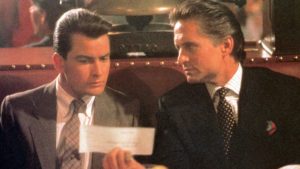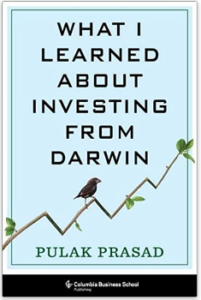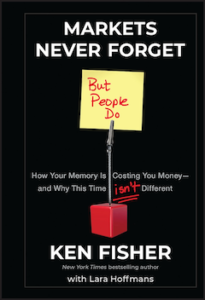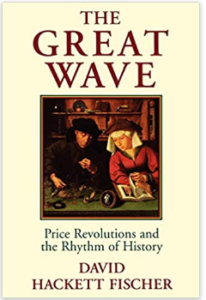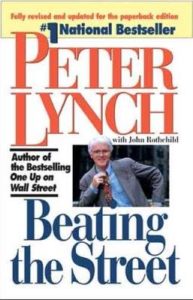In our Kindle we passed 1000 books this weekend. Cognizant that it takes years to read even half as many books with the attention the task deserves, I recently changed my approach to searching for and consuming books. One of my Kindle collections is a folder called “Started,” which used to have only a handful of titles through most of last year, versus over one hundred today. I plan to finish these books, but that is no longer the central target. I’ve grown out of putting targets on my readings, if only because it retards my progress. Another reason the unfinished book count spiked is that I now use keyword searches more often, especially with the extra-lengthy, and often byzantine, original works. The 2006 printed edition of the collected works of John Stuart Mill, for instance, consists of 33 volumes that run for thousands of pages and costs $97.99 on Amazon (link). Alternatively, one can purchase the Complete Works Delphi Classics edition on the Kindle for $1.99 (link). This cheaper version not only has all his works, but contains four biographies on Mill as well as his autobiography. The printed length is 7540 pages.
On Friday a friend suggested I write something about my pace of reading, on the same day another friend coincidently asked me why I stopped writing book reviews (I haven’t). The reason I haven’t posted a new book review in a while is that I am so busy reading them. But then on Sunday, the popular investment blog, Farnham Street, posted a comment subtitled Why Unread Books Are The Most Important (link). The posting quoted The Black Swan (2007), where Taleb describes Italian writer Umberto Eco’s (1932-2016) 30,000 book library. “The more you know,” the blogger observes, “the larger the rows of unread books.” I think that’s true, but 30,000 books is a little overboard, no? How much time did Umberto have to write? I Googled him and discovered that The Name of the Rose (1980), was his first and most famous book, as it became a 1986 movie starring Sean Connery. In his Wikipedia page (link) it claims that Umberto Eco actually had a lot more than 30,000 books. “He divided his time between an apartment in Milan and a vacation house near Urbino. He had a 30,000-volume library in a former and a 20,000-library in the latter.” By the time Umberto died at 84 in 2016, he had written only six more novels, and none were as popular as his first.
In Napoleon: A Life (2018), Adam Zamoyski writes: “Presumably in consequence of a lack of reading matter, [Napoleon] gave orders for the creation of a thousand-volume travelling library, in the small duodecimo format with large print fit to be read in a carriage.” I remember reading that and thinking – wait a second! Not only is that a lot of books to haul around in an 18th Century horse carriage (or two), but how many books could Napoleon possibly read when he was spending so much time writing home to his wife Josephine, or on a horse’s back waging war? But then again, apparently many of Napoleon’s readings were done out loud to an audience. Not only did he haul around a lot of weight in books, he also consumed a lot of candles to read them. Anyway, if you ever wondered how many books fit in the boot of a car – I Googled it (link) – the answer is just above 1000.
Back to our Kindle, COVID has clearly changed my reading habits and patterns for the better. I can now consume and synthesize more books in less time, and with more joy. I love the office, but I wouldn’t be as fun as I used to be when I spent most of my day in one. Since I mostly read all day, with both my eyes and ears, you can forget the friendly water cooler chitchat about the weekend. According to Andrew Roberts’ 2018 biography, Churchill spent most of his time dictating his books from his bed! I look up to Churchill, but I do not choose to emulate him, so I do at least jump out of bed every day, and I also go for bike rides. Anyway – having passed the 1000 book milestone, I recently took the time to update my collections. Below are seven categories I recently created that capture the jump in productivity I experienced post-COVID, and then the explosion that happened post-Ukraine, as I discovered I was a late-bloomer and a war history fanatic.
ALL KINDLE BOOKS … 1010 (took a decade to reach 500, then doubled post-COVID)
- RECENTLY ADDED … 197 (about half were added this year)
- FINISHED PRE-COVID … 284 (includes many classics)
- FINISHED POST-COVID … 314 (crazy jump since working from home)
- FINISHED POST-UKRAINE … 30 (mostly about war)
- STARTED POST-UKRAINE … 131 (huge surge last month, not all about war)
- NOT STARTED … 232 (huge surge in the last couple of weeks)
- RE-READS … 59 (as with the most outstanding companies, some books keep growing in relevance)
Here are the “core” Collections that I use to catalog all my books. Notice there is no folder for Fiction. Nothing against it, but unless it’s a Classic, like Goethe’s Faust (1773), Querois’ Primo Basílio (1878), or Hemingway’s The Sun Also Rises (1926) – I just don’t have the time, nor much of an interest, in fiction.
- HISTORY … 286
- NON-INVESTOR BIOGRAPHY … 194
- INVESTOR BIOGRAPHIES … 116
- TECHNOLOGY … 66
- PSYCHOLOGY … 112
- ECONOMICS … 105
- CLASSICS … 126
- WAR HISTORY … 99
- POLITICAL SCIENCE … 65
- PHILOSOPHY … 66
- MARKETS … 90
- SHORT SELLING … 32
- INVESTING … 85
- MONEY … 71
- STRATEGY … 64
- COMPANIES … 82
- SELF HELP … 44
- PARENTING … 28
- ORIGINAL WORKS … 64
I share below some comments on twenty books I recently completed.
- Don’t Trust Year Gut (2022) – by Seth Stephens-Davidowitz: Excellent book and at times, hilarious! Seth is the ex-Google data scientist who published Everybody Lies (2017), which was also outstanding. He couches this latest masterpiece as more of a “self-help” book, but it’s a lot more than that, in my opinion. The book is packed with precious insights on things that we would otherwise not recognize. Beware conventional wisdom.
- Markets Never Forget, But People Do (2011) – by Ken Fisher – perfect book to read when the stock market chips are down. No new, earth-shattering insight, but a lot of wisdom on what works and doesn’t work in markets. Waiting for the news to improve, for instance, doesn’t work as well as finding stocks you can hold through thick and thin.
- Elon Musk: Risking it All (2022) – by Michael Vlismas: A unique book written by a South African who went to the same grade school as Elon. The author is clearly a Musk fan, but the book is well-balanced and well researched, and in some respects, more informative than the Ashlee Vance’s 2017 biography, Elon Musk: Tesla, SpaceX, and the Quest for a Fantastic Future, which Vlismas claims he never read so as to not bias his own work.
- Abraham Joshua Heschel: A Life of Radical Amazement (2021) – by Julian Zelizer: This was an amazing book and Rabbi Heschel was an amazing man. Having recently read his classic, God in Search of Man (1976), this book was even more meaningful to me than it would have been otherwise. To share just a few quotes from Heschel’s classic: (1) “Intelligence cannot be separated from training,” (2) “Polarity is an essential trait of all things,” (3) “The greater the man, the more he is exposed to sin,” and my favorite, (4) “A good person is not he who does the right thing, but he who is in the habit of doing the right thing.” Beyond how beautiful his writings were and how much of an impact he had in promoting human rights, I also took note of how much more prominent religious figures were in the 1960s versus today.
- 21st Century Monetary Policy (2022) – by Ben Bernanke: This was another excellent book. The main takeaways are that the Fed knows what it is doing, credibility is paramount, and some degree of short-term instability is essential for assuring long term stability. I read Bernanke’s other book, The Courage to Act (2015), and that was more of an autobiography than this one. I also read Bernanke’s Essays on the Great Depression (2000), which was quite expensive but worth the money, despite the occasional equations. Bernanke is a very good writer and accomplished academic.
- The Man Who Understood Democracy: The Life of Alexis de Tocqueville (2022) – by Olivier Zunz: Another amazing book, which together with his own books and the passing of nearly two centuries of being spot on, confirms that Alexis de Tocqueville was a genius. One of the biggest prizes from having read this book was that it motivated me to start The Ancien Regime and the French Revolution (1856), where de Tocqueville surveys the history of revolutions to conclude that it is improving conditions out of misery, and not the misery itself, that precipitate revolutions. Machiavelli had already warned about this, and Stalin put it into practice with his oppressive tactics in Communist Russia, but few have pinpointed it as well as de Tocqueville.
- The Anxious Investor (2022) – Scott Nations: This started out as a great history book, but then it turned into an advice book with advice that I did not agree with, and supporting data that I do not believe is accurate. Basically he argues that a balanced portfolio generates more return with lower risk than a fully invested stock portfolio. Sorry Scott, it doesn’t. Even the first part, which as I said was pretty good, was largely borrowed from Nation’s 2018 book, A History of the United States in Five Crashes, which I enjoyed but found to be somewhat superficial.
- Why Minsky Matters (2015) – by L. Randall Wray: The author was a student of Minsky and he does a good job of dumbing down Minsky’s complex theories. I have tried to read Minsky’s books and have found them extremely difficult to follow, and often polluted with unhelpful equations. My favorite by Minski was John Maynard Keynes (1976), which I appreciated when I read it after ten years, but liked even more when I re-read it two weeks ago.
- John Maynard Keynes (1976) – by Hyman Minsky: This book is not outstanding as a standalone volume, and it too is polluted with equations, but the part of the thesis of the book is deep and still very relevant. Keynes is known and associated for easy fiscal and monetary policies, but his main concern was stability, which he admitted could not be achieved by merely suppressing the downturns – as this would just fuel more animal spirits.
- World Order (2014) – by Henry Kissinger: I read this incredible book in one sitting. Kissinger was a contemporary of Heschel and the two men disagreed on their interpretations of reality. Kissinger was a pragmatist who put diplomacy and expediency ahead of core beliefs and morality, whereas Heschel believed it was man’s duty to not stand idle in the face of evil – and that doing nothing about it was a sin. While Heschel’s approach is more noble, I suspect Kissinger’s does less overall harm, and that there is space for both world views to co-exist, just as it is possible for a Rabbi to inspire a generation of non-Jewish people to stand up against the evils of racism and authoritarianism.
- When the Fund Stops (2021) – by David Ricketts: Short book with interesting facts, but not that great unless you are a fund manager enthusiast who relishes in schadenfreude. It tells the story of the downfall of British fund manager Neil Woodford.
- The China Mirage (2015) – by James Bradley: The title does this book a disservice because it makes it sound like one of those crazy conspiracy theories. While the author does indeed seem angry about history, this is a well-researched and credible history book that is a true eye-opener about how poorly America has conducted its foreign policy with Asia in general, but particularly China, over the decades.
- The Money Revolution (2022) – by Richard Duncan: This was a very interesting book although he goes off a cliff towards the end when he concludes that all the government needs to do is print its way to technological dominance. While I suspect he is right, I do not think it is plausible that his advice would ever be followed. I went on his website and saw that he was a macro advisor who frequently makes short term calls on the market. All told though, and despite some unnecessary repetition, this is an important book with some of the best explanations of how the Fed works that I have seen anywhere.
- The Great Boom (2000) – by Robert Sobel: Great book, like most of Sobel’s other books. My biggest takeaway was the realization of just how rich America got on real estate. While there were several factors that contributed to the great boom, such as innovation, immigration, and military dominance, no factor had a greater direct impact than real estate ownership – or more specifically, home ownership.
- Play Nice But Win (2015) – by Michael Dell: Great book! Michael Dell is a giant! It was possible to detect in this book that Dell was about to sell VMW to the highest bidder, which they just did last month by accepting a $61 billion offer from Broadcom. Dell and Silverlake made so much money on this asset it’s not even funny.
- Barton Biggs Chronicles during his Morgan Stanley Years (2014) – by Barton Biggs: Biggs was also a giant and there are some great writings in this compilation, many of which I remember reading when I followed him closely, and others which I missed, but remain highly applicable today.
- Lessons from Titans (2020) – by Scott Davis: I was skeptical of this book, but am really happy I read it. The writeups on Boeing, GE, Transdigm, and Danaher were all excellent. Some of the others were not.
- Amp it Up (2022) – by Frank Slootman: This is his second book that I read, with the other one being Rise of the Data Cloud (2020). I always enjoy reading books by high profile tech CEOs, although I realize they tend to be highly biased and promotional. In this book Slootman focuses on culture, whereas his last book was about cloud technology itself. I liked this one better, especially when he compares his days at Service Now (NOW) and these days at Snowflake (SNOW), which incidentally, has been struggling with softening demand of late.
- The Great Debate (2013) – by Yuval Levin: This was a good book on a topic that I am getting deeper into through other, more serious and less-biased books on political sciences.
- The Great Inflation and its Aftermath (2008) – by Robert Samuelson: Good but not great. It is always refreshing to see evidence of how problems come and go then come back again. This book is particularly interesting in that it came out when there was heightened concern of inflation (after oil hit $145/barrel in July 2008), just when the world was about to be afflicted with a serious bout of deflation instead.
Of the twenty books listed above, the most timely (and precious) was Ken Fisher’s Markets Never Forget (2011). Ken has been around for a long time and is a little full of himself, but his success and its longevity are undeniable. He has written 11 books (https://www.kenfisher.com/books) and was the longest-running columnist in Forbes Magazine before calling it quits in 2017. Fisher founded his firm in 1979 and served as its CEO through 2016, when he appointed Damian Ornani as CEO and took on the titles of Executive Chairman and Co-Chief Investment Officer. Wikipedia says that “as of June 2021, Fisher Investments and its subsidiaries managed over $188 billion in assets for individual and institutional investors globally.” On Fisher Investments’ website, it says they manage $197 billion for 100,000 private high net worth individuals and 150 institutions globally. No matter how one looks at it, it’s hard to deny that Ken is a successful money manager. While I am not a fan of Ken and everything he writes (especially when he brags and talks down to people and repeatedly states that “he doesn’t care what people think of him”), his insights on how people forget are spot on an could not be more applicable and appropriate for the moment we are living. I could easily close with some quotes from the book, but I will keep it to just one quote:
From Ken Fisher’s book: “Folks get particularly freaked out by big returns when bull markets start. It seems like too much, too fast—and particularly so since they’re still fearful of all the things that freaked them out in the prior bear market. If they can’t remember that stocks don’t return a safe, predictable 10% each year, then new bull markets (no matter how many they’ve been through) really send them into a tailspin of myopic fear. People are basically and naturally afraid of heights, and when the market rises more than they expected right after a scary bear market, they fear it will fall back. And since humans hate losses more than they like gains, that fear of heights is doubly scary. Most folks understand when stocks fall 25%, rising 25% doesn’t get them back to breakeven—stocks must then rise 33% for that. To recoup a 40% drop, stocks must rise 67%. So when stocks fall big, as world stocks did from October 2007 to March 2009—down 57.8%—that takes a 137% rise just to get back to previous highs. A common refrain I heard in 2009 and after was, “If stocks rise an average of 10% a year, it could take eight years for me just to break even—never mind growing beyond that!” That would be bleak, indeed. But stocks typically don’t rise an average of 10% in bull markets, they have risen an average 21.2% annually.”
The key point from Ken’s excellent book is that it’s not worth getting frightened out of stocks. Stated differently, it is paramount that investors in stocks find a way to stick with them over the long term. The problem that people have as investors (that keeps them from achieving this goal), is not just that they forget, but that they remember it all wrong. In Seth Davidowitz book (#1 above), he gives the example of how people experience colonoscopies. Believe it or not, there is data on this stuff, even though these days (in the US at least), most colonoscopies are done under full anesthesia. The punchline is that the procedures are remembered for the peaks and the very end of the experience. A procedure that lasts hours was remembered as being no more taxing than one that lasted only a few minutes. Davidowitz didn’t come to this conclusion himself, but I must say it here: Bear markets are like colonoscopies. When we look back its easy to forget how much longer they really lasted than when you are going through them.
From Davidowitz’s book: “One major mental bias that interferes with our happiness recall: duration neglect. This bias means that, in judging the quality of a past experience, we fail to take into account how long that experience lasted. Clearly, in real time, people want pleasurable experiences to last longer and painful experiences to end quicker. Clearly, in real time, a person would want, say, a painful colonoscopy to be as short as possible. But, after the fact, duration neglect tells us, people tend not to distinguish between painful experiences of differing lengths. People just remember that an experience was bad but don’t remember how long it was bad for. Five minutes of pain is hard to distinguish, in hindsight, from fifty minutes of pain. Duration neglect explains part of the reason that Patient B failed to remember the unusually painful nature of their colonoscopy. One of the reasons that it was so bad was that it lasted so long. In fact, in Redelmeier and Kahneman’s study, there was almost no relationship between how many minutes the colonoscopy lasted and how painful people remembered it being. Some people experienced colonoscopies of a mere four minutes; others experienced colonoscopies that lasted more than an hour. But after the fact, it was all a painful colonoscopy to everybody.”




